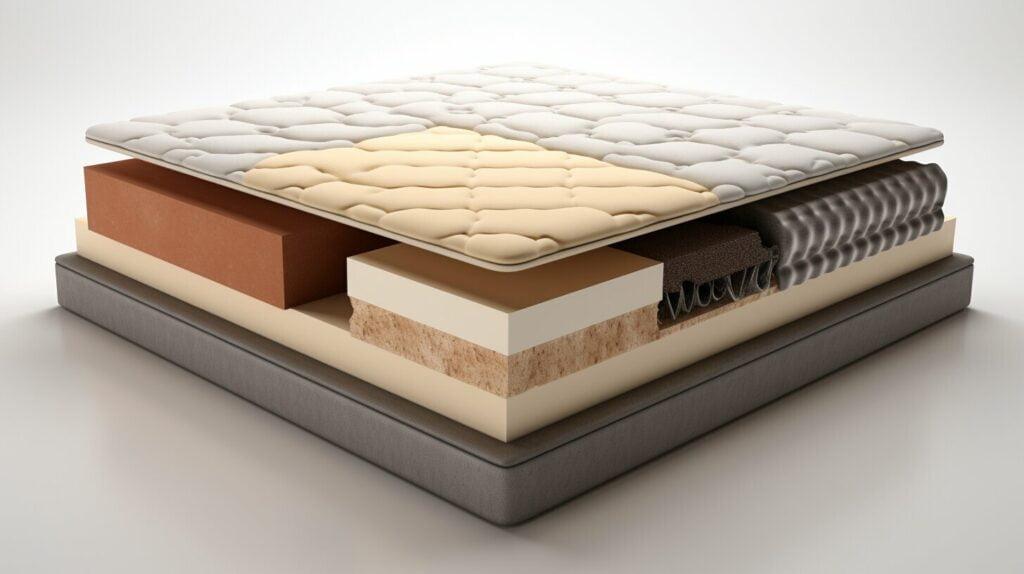Memory Foam vs Latex vs Innerspring: Which Mattress Is Best?
Ever wonder if your mattress is actually helping—or hurting—your sleep? Picking between memory foam, latex, and innerspring mattresses can be tricky. With so many choices out there, it’s easy to feel overwhelmed. In this guide, we’re breaking down the memory foam vs latex vs innerspring debate to help you find your perfect match and sleep more soundly every night.

Why Your Mattress Matters
Your mattress isn’t just a place to crash—it’s your sleep sanctuary. The right pick can ease pain, reduce tossing and turning, and keep your body aligned throughout the night. A good mattress helps you wake up refreshed, not stiff and groggy. When you’re deciding between memory foam vs latex vs innerspring, keep in mind that your choice can transform both your sleep and your overall well-being. Good sleep is crucial for everything from mood to productivity, so it’s worth taking the time to choose wisely.
Memory Foam: Cozy Contour
Memory foam hugs your body, easing pressure points—great if you’re a side sleeper or have aches and pains. It molds to you, almost like the mattress is giving you a gentle hug every night. It’s also excellent at blocking motion, so partner movements won’t disturb you. This makes memory foam an especially good choice for couples or anyone who’s a light sleeper. Just note: it can trap heat, though many newer models include cooling gel foam, breathable covers, or air channels to help offset this issue. More on memory foam here.

Latex: Cool & Durable
Latex offers a bouncy, breathable feel that stays cool all night long. It’s made from either natural or synthetic rubber and has a responsive, springy quality that feels supportive but not too firm. This makes it easy to change positions during the night without that “stuck” feeling that some foam mattresses can cause. Latex is also naturally resistant to dust mites and mold, making it a great choice for allergy-prone sleepers or anyone looking for a more eco-friendly option. Bonus: it tends to last longer than other types of mattresses. For a deeper comparison, check out this expert guide on latex vs. innerspring mattresses. Check out latex pros and cons.
Innerspring: Classic Support
Innerspring mattresses are the tried-and-true classic, a staple in many homes. They feature a network of steel coils that deliver firmer, more traditional support. These mattresses often have a lively, bouncy feel and great edge support, meaning you can sit or sleep right up to the sides without sagging. They’re budget-friendly and widely available, though they may not offer the contouring comfort of foam or latex. Learn more about how latex and innerspring compare, especially in terms of pressure relief and support, in this detailed comparison article. Learn more here.

Match Your Sleep Style
- Back Sleepers: Tend to prefer firmer support to maintain spinal alignment—innerspring or hybrid models are solid choices for keeping the lower back supported.
- Stomach Sleepers: Need a mattress that keeps their hips from sinking in too much. Medium-firm to firm is ideal, often found in innerspring designs, to prevent lower back strain.
- Side Sleepers: Benefit from contouring that cushions the shoulders and hips—memory foam or softer latex works best here to relieve pressure points.
Hybrid: The Best of Both
Can’t decide? Hybrid mattresses mix coils and foam or latex for a balanced feel—supportive yet cushioned. These mattresses are becoming more popular thanks to their versatility and comfort. They often include cooling features and motion control layers, making them a go-to option for couples or hot sleepers. If you love the support of innerspring but want the softness of foam or latex, a hybrid could be your best bet. Explore hybrid options.
Quick Price & Lifespan Guide
| Mattress Type | Price Range | Lifespan |
|---|---|---|
| Memory Foam | $800 – $2,500 | 8–10 years |
| Latex | $1,300 – $3,000 | 10–15 years |
| Innerspring | $500 – $1,800 | 7–10 years |
Bottom Line
The memory foam vs latex vs innerspring decision comes down to your comfort preferences, sleep style, and budget. Each type has its perks, so think about what feels best for your body and your unique sleep habits. Test a few, trust your instincts, and choose a mattress that helps you wake up feeling rested and ready for the day ahead. Investing in the right mattress is truly investing in your well-being. Discover more sleep tips here.













